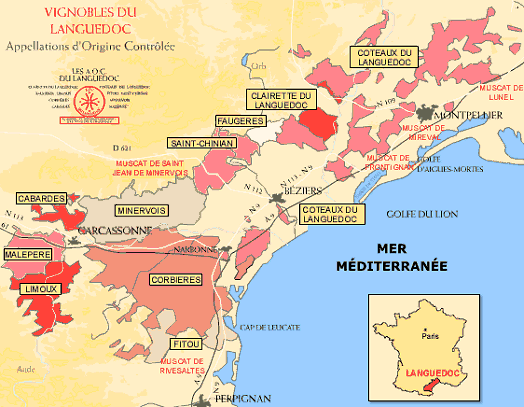Corbieres Wine Region And Why You Need To Know It
- Wine Hobbyist
- Jan 12, 2023
- 3 min read

One of the keys to finding deliciously striking yet affordable wines is understanding some of the lesser talked about wine regions and the wines they produce. From there, you source what that region does best, and I guarantee you that most of your go-to and repeat-buy wines will come from this exercise. I did the same thing in exploring wines from the south of France and, in doing so, discovered the beauty of Corbières.
AOC Corbières
The wine appellation Corbières is located in the south of France in a wine region called Languedoc-Roussillon.
The Languedoc-Roussillon region is the largest wine region in France and once had a reputation for producing wine on mass. The challenge with their mass production was that much of what was made was not good. For this reason (history), some shy away from trying wines from the area, and that's a shame. So much has changed, and the region is filled with grape growers and producers obsessed with getting it right.

In addition to showcasing the terroir and region in a bottle, there is a real focus on sustainable winemaking in Corbières, with more than half of the producers being certified organic. This may cause you to shrug your shoulders, but considering how large the region is, you'll think twice. To put it into perspective, Corbières is the largest producing wine region in the Languedoc, the fourth largest in France, and has over 2,000 producers! Regardless of size and the magnitude of the task, by 2024, the Corbières producers’ organisation is making environmental certification a must in order for a producer to gain AOC certification. So, if you want to use the appellation name on your label, you'll need to show and prove a green commitment.
AOC Regulations
Corbières gained AOC status in 1985, and the rules state that the red wines can be made up of Carignan, Syrah, Grenache Noir, Lladoner Pelut, Mourvèdre, Picquepoul Noir, Cinsault, and Terret Noir. It must be mentioned, however, that Carignan (up to a maximum of 50%) is the backbone of this wine. With Carignan as the backbone, you are start with a well-structured base of pronounced tannins, acidity, and fruit on the palate.
Permissible grapes for white wines in Corbières are Bourboulenc (Malvoisie), Grenache Blanc, Maccabeu, Clairette, Muscat (10% maximum), Piquepoul, Terret Blanc, Marsanne, Roussanne and Vermentino (Rolle).
The majority of wine that the region produces is red (88%), followed by rosé (9%) and white wine (3%). For most, it is in the red wine category where this appellation really shines.
What to Expect From the Red Wines of Corbières
Corbières enjoys a long Mediterranean growing season. Given the longer hang time for the grapes, you end up with ripe and plush wines showing dark and generous fruit. The fruit descriptors you will find are cherry, fig, some blackberry, and dark plum. There are abundant non-fruit elements that add to the complexity of a good bottle of Corbières. Think anise, mushroom, tobacco, leather, maple syrup bacon, and minerality. In Canada, you can find exquisite expressions of Corbières for as low as $15, and they will leave you wanting more.
Your Corbières Experience
With Corbières being as large as it is in land mass, you get various soil types and microclimates. The region defines itself through 11 terroirs that highlight the variety of the area. For these reasons and more, discovering the wines of Corbières is very exciting!
While Germany and China are Corbières biggest export markets, about 20% of what it produces is exported to North America, making it possible to find some of these gems on your wine store shelves.



Comments